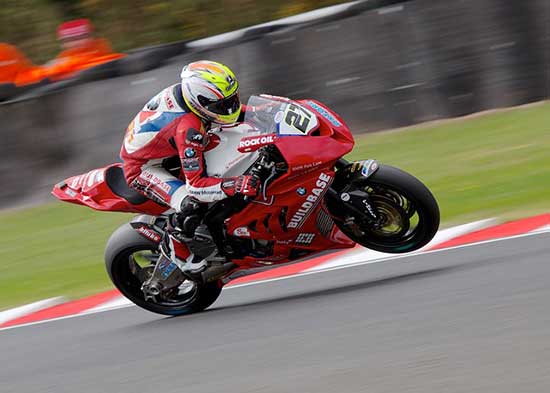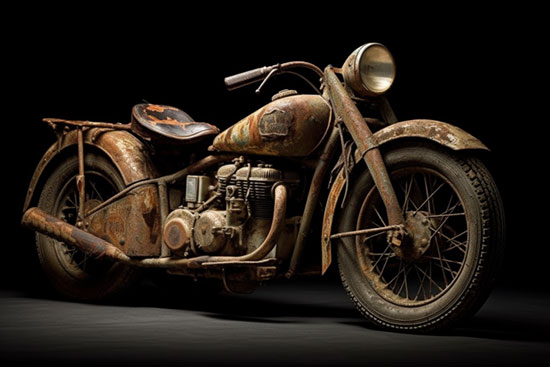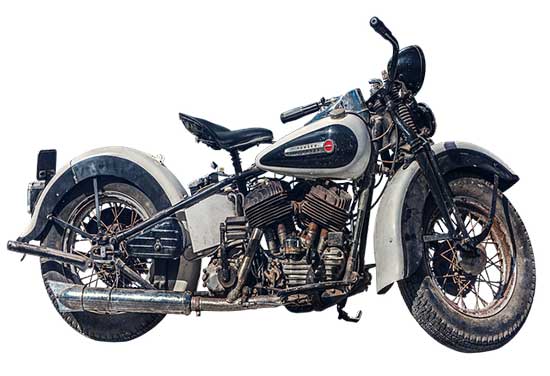Keeping an eye on your motorcycle’s temperature is essential for ensuring its proper functioning and longevity.
The temperature of the engine, oil, and coolant can affect your bike’s performance, fuel efficiency, and even its lifespan.
By monitoring these temperatures and making adjustments when necessary, you can prevent damage to your bike and ensure a smoother, more enjoyable ride.
Types of Motorcycle Temperature
Engine Temperature
The engine temperature is the heat generated by the engine while it is running. It is influenced by factors such as engine load, ambient temperature, and cooling systems.
Keeping your engine within its optimal temperature range is crucial for maintaining its performance and preventing damage.
Oil Temperature
Oil temperature refers to the heat of the oil circulating within the engine. It is vital to monitor because oil plays a crucial role in lubricating and cooling engine components.
If the oil temperature gets too high, the oil can lose its ability to perform these functions effectively, leading to increased wear and potential engine damage.
Coolant Temperature
Coolant temperature is the heat of the liquid that circulates through your engine to absorb and dissipate excess heat.
Monitoring the coolant temperature ensures that your cooling system is functioning correctly and helps prevent overheating.
Contents
Factors Affecting Motorcycle Temperature
Riding Conditions
The way you ride your motorcycle can significantly impact its temperature. Aggressive ridings, such as rapid acceleration and high-speed runs, can generate more heat in the engine.
In contrast, stop-and-go traffic can cause the engine to overheat due to reduced airflow and prolonged idling.
Engine Load
The amount of work your engine is doing, or its load, can influence its temperature. Towing a trailer, riding uphill, or carrying a heavy load can all increase engine temperature.
It’s essential to monitor your bike’s temperature during these activities to avoid overheating.
Ambient Temperature
The surrounding air temperature can also affect your motorcycle’s temperature. On hot days, your engine may struggle to dissipate heat, leading to higher temperatures.
Cold days, on the other hand, may make it difficult for your engine to reach its optimal operating temperature, which can affect performance and fuel efficiency.
Temperature Ranges and Their Effects
Optimal Temperature Range
The optimal temperature range for most motorcycles is between 160°F and 220°F (70°C and 104°C) for engine temperature, and around 180°F to 210°F (82°C to 99°C) for oil temperature.
Within this range, your motorcycle’s engine operates at peak efficiency, with minimal wear and tear.
It’s essential to keep your bike within this temperature range to maintain its performance and prolong its lifespan.
Overheating
Overheating occurs when your motorcycle’s temperature exceeds its optimal range. This can cause the engine oil to break down, leading to reduced lubrication and increased wear on engine components.
Overheating can also cause damage to the engine itself, such as warped cylinder heads or damaged gaskets. If you notice your motorcycle overheating, it’s crucial to stop and let it cool down before continuing your ride.
Too Cold
If your motorcycle’s temperature is too low, it can negatively impact its performance and fuel efficiency. Cold engines can struggle to burn fuel efficiently, leading to poor combustion and increased emissions.
Additionally, the oil may not circulate effectively, reducing its ability to lubricate and cool engine components.
It’s essential to warm up your motorcycle before riding to ensure it reaches its optimal operating temperature.
Tips for Maintaining Optimal Temperature
Regular Maintenance
Performing regular maintenance on your motorcycle is one of the best ways to ensure it stays within its optimal temperature range.
This includes checking and changing the engine oil, inspecting the cooling system, and keeping an eye on your bike’s temperature while riding.
Choosing the Right Coolant
Selecting the right coolant for your motorcycle is essential for maintaining proper engine temperature.
Different coolants have various boiling points and freeze protection levels, so it’s crucial to choose one that is compatible with your bike and suitable for your riding conditions.
Monitoring Your Riding
Being mindful of how you ride can also help maintain your motorcycle’s temperature. Avoid aggressive riding and prolonged idling, and pay attention to your bike’s temperature during activities that increase engine load, such as towing or carrying heavy loads.
Conclusion
Monitoring and maintaining your motorcycle’s temperature is crucial for ensuring its performance, fuel efficiency, and longevity.
By understanding the different types of motorcycle temperatures, the factors that affect them, and the various temperature ranges and their effects, you can take steps to keep your bike within its optimal temperature range.
Regular maintenance, choosing the right coolant, and monitoring your riding are all essential strategies for maintaining your motorcycle’s temperature.
FAQs
1. What is the optimal temperature range for a motorcycle engine?
The optimal temperature range for most motorcycle engines is between 160°F and 220°F (70°C and 104°C).
2. How do riding conditions affect motorcycle temperature?
Aggressive riding, stop-and-go traffic, and engine load can all impact your motorcycle’s temperature by generating more heat or reducing airflow.
3. What are the consequences of overheating?
Overheating can cause engine oil to break down, leading to reduced lubrication and increased wear on engine components.
It can also damage the engine itself, such as causing warped cylinder heads or damaged gaskets.
4. How can I prevent my motorcycle from overheating?
Regular maintenance, choosing the right coolant, and monitoring your riding can help prevent your motorcycle from overheating.
5. Why is it essential to warm up my motorcycle before riding?
Warming up your motorcycle before riding ensures that it reaches its optimal operating temperature, which is crucial for maintaining performance and fuel efficiency.






